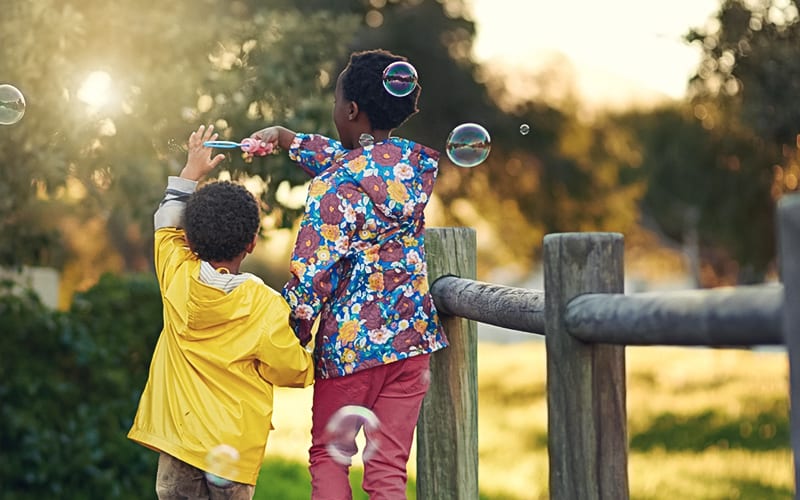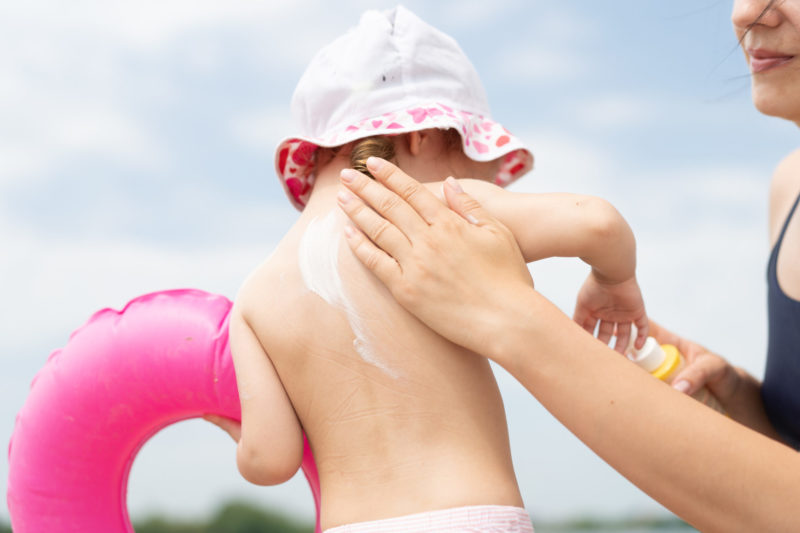As a parent, you know some kids are more fearless than others. And the adventuresome ones are often the kids we lecture most about playing safely. But bold children aren’t the only ones who get injured while playing; even cautious children find themselves in unknowingly hazardous situations and end up in the ER as a result. Thankfully, most injuries that occur while playing are preventable.
How you approach safety has a lot to do with the personality of the child and his age, but there are some fundamental precautions you should take to help keep your kids safe while playing whether they’re toddlers or tweens, and we’ve collected the top seven.
1. Gear up
Although youth sports related deaths aren’t common, the American Association of Neurological Surgeons reports the leading cause of fatal sports injuries is traumatic brain injury. Get your toddler in the habit of wearing a helmet to protect her noggin, and you’ll have a lot less trouble getting her to do it as she gains independence. Whether she’s riding her first scooter or he’s headed off to a game of Pee-Wee football, proper head protection is non-negotiable.
2. Play by the buddy system
Playing outside exposes your child to dangers. When your child is playing outside, insist she have a playmate and that they stick together at all times. It’s also a good idea for your child, and the children she plays with to know the location of “safe houses”—neighborhood homes they can run to should a stranger approach them or if someone gets hurt. If you want to find out where convicted sex offenders live in your community, consult FamilyWatchDog.us. In just seconds, your free search will reveal their locations.

3. Provide a confined play space
Older children may be mature enough to walk to a nearby friend’s house or play basketball in the cul-de-sac, but younger children need protected spaces to play. Provide a secure space (like a fenced yard) where little ones can’t easily wander off and intruders are deterred from entering. As your child develops, you may have to adjust the locking mechanisms on gates and fences; it won’t take your little one long to figure out how to break out of the backyard! Enjoy a walk around the neighborhood and set clear boundaries on how far they can stray from home.
4. Play playground inspector
Like all equipment, playground equipment deteriorates over time. If no one is keeping close watch and making repairs, your child could easily get injured. When you arrive at the playground, check to be sure the equipment is in good condition, and then inspect the surrounding area for dangers. Rocks and tree roots are tripping hazards, and broken glass, nails and bottle caps can cut your child. It’s a good idea to have a first aid kit in the car, or a mini kit stored in the stroller just in case.

5. Create a kid-friendly zone
If you’re like most parents, when your kids yell they’re headed out to the backyard to play, you don’t give safety a second thought. But even your own yard can present a myriad of dangers. Keep these common hazards in mind.
- Tools left astray and garden hoses left unreeled present tripping hazards. Take five minutes to put these items in the shed or garage.
- Kiddie pools should be put in a secure place immediately after use and hot tub covers should always be latched to prevent drowning. Always keep 5 gallon buckets inaccessible to young children.
- Ladders left popped up to the house are begging to climbed and present a falling hazard.
- And don’t overlook Mother Nature’s hazards, including poison ivy, fire ants and low hanging tree branches. Be especially vigilant about checking playhouses for bee and wasp’s nests; the stinging insects are notorious for making home there.

6. Sun safety and frostbite blues
Before your child heads out the door, apply a broad-spectrum sunscreen with a minimum SPF of 30.
According to the American Academy of Pediatrics, sunscreen takes about 15 minutes to become effective, so plan accordingly. The Academy also advises to be especially attentive to sunscreen application when your kids are playing on sand or concrete because UV rays bounce back off both surfaces. Reapply sunscreen about every two hours, and use a waterproof sunscreen if she’ll be taking part in water activities.
Remember that even on cloudy days and during the cooler months your child needs to be protected from the sun’s harmful rays. And with winter around the corner, you’ll want to be sure your child is properly protected from the cold to avoid frostbite. Keep a basket of cold weather gear near the door, and your child will be more likely to put on a hat and mittens on as she heads out for a day of sledding.
7. Stay hydrated
No matter what the season, your child can easily become dehydrated when playing. Have him drink 8 ounces of water before he takes off for a game of flag-football, and give him a refillable water bottle to take along. Encourage your children to drink small amount of water often while playing (about every 20 minutes) and have him cool down with water when he’s done playing. Alert your children to the signs of mild to moderate dehydration that the Mayo Clinic says include no tears when crying, a dry mouth, dizziness, fatigue, headache, and yellow urine.
With iPhones, Kindles and Xboxes in the hands of even the youngest children, we’re thrilled when kids want to head outside and gallivant until the sun goes down. Use our safety tips to help ensure your child’s outdoor play time is as safe as it is fun!
Related Pages on SafeWise
The post 7 Simple Ways to Keep Kids Safe When Playing appeared first on SafeWise.
Aricle source here: 7 Simple Ways to Keep Kids Safe When Playing
No comments:
Post a Comment